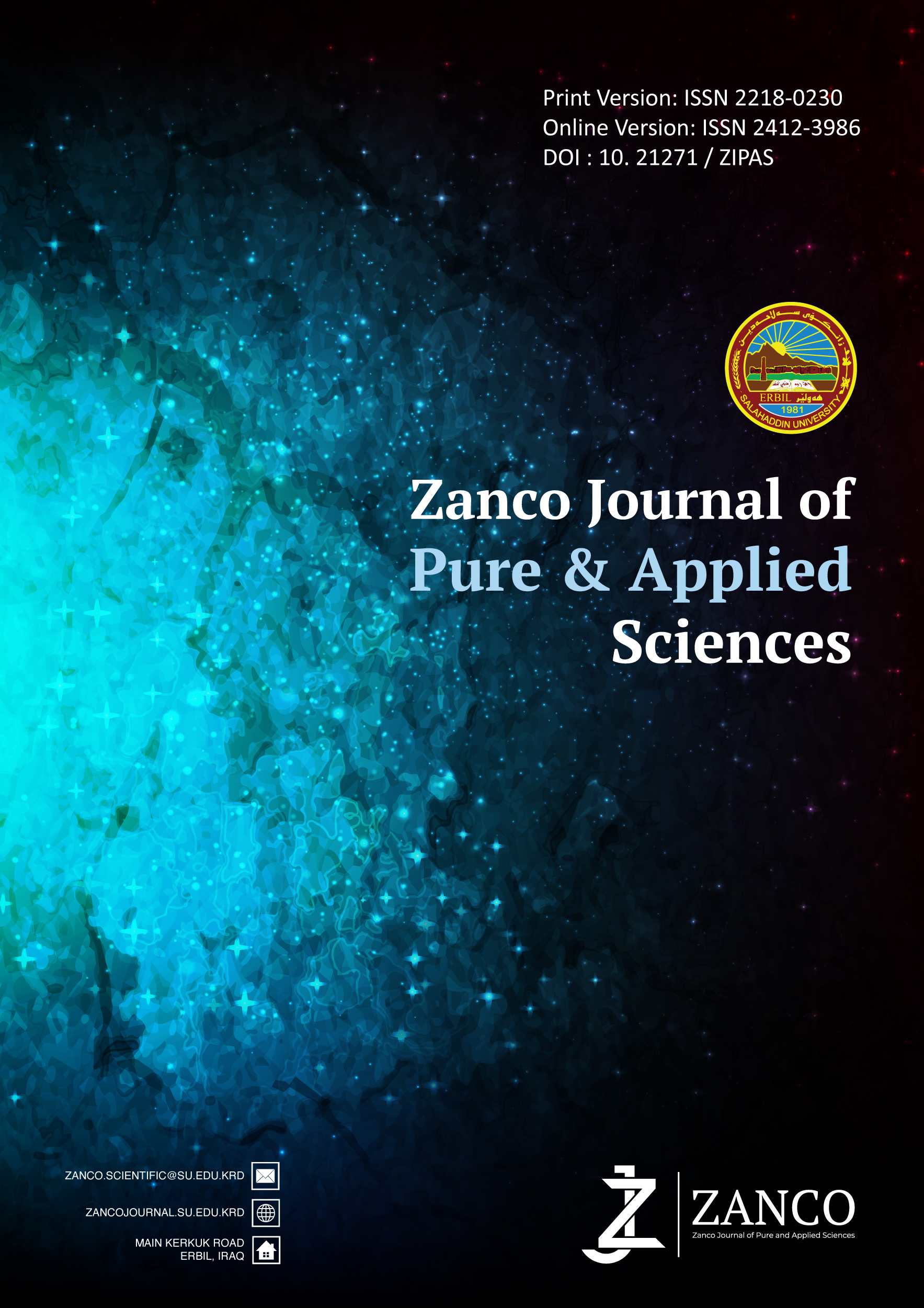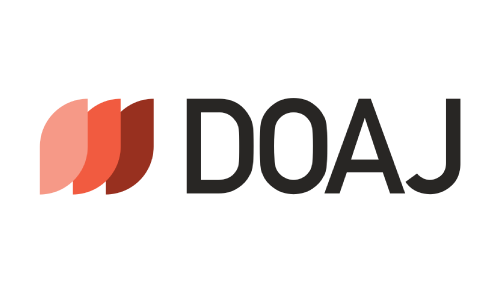Molecular identification and antimicrobial activity of Streptomyces spp. isolated from soil in Garmian Region, Iraq
DOI:
https://doi.org/10.21271/ZJPAS.36.6.5Keywords:
Actinobacteria, Active metabolites, Garmian, Iraq. Streptomyces.Abstract
Multidrug-resistant pathogens present a significant obstacle in the prevention and treatment of infectious diseases, making the discovery of new antimicrobial agents from diverse sources essential. Actinobacteria, especially Streptomyces genus, are well-known for their prolific production of secondary metabolites with antimicrobial capabilities. The geographical niches of Iraq are one of the least explored ones for Actinobacteria strains. Hence, this study aimed to isolate Actinobacteria species from the soil in the Garmian region of Iraq and evaluate their potential antimicrobial activity
A total of forty soil samples were collected and screened using various standard culture media to facilitate isolation, morphological identification, and evaluation of antimicrobial activity. Molecular identification and species confirmation were performed through amplification of the 16S rRNA gene via PCR, followed by sequence comparison with the NCBI database. The obtained two distinct strains of Streptomyces were identified, with one demonstrating significant antimicrobial activity against several pathogens, namely, Escherichia coli ATCC 25922, Staphylococcus aureus ATCC 25923, and Candida albicans ATCC 10231.
Both isolated strains were registered in NCBI under accession numbers OR564031 and OR564032, corresponding to isolates 26 and 29, respectively. Their sequences exhibited high similarity to Streptomyces rochei strain SCOS (Accession No. KX575853.1) with 99.04% identity, and Streptomyces sp. WAC06273 strain (Accession No. CP042278.1) with 98.81% respectively. These Streptomyces strains from Iraqi soils show promise as potential candidates for novel antibiotic discovery.
Further exploration of Streptomyces in soils from Garmian region, along with identification and purification of the active metabolites identified in this study, is strongly recommended.
References
Abdel-Aziz, Mohamed S., Amal S. Hathout, Aziza A. El-Neleety, Ahmed A. Hamed, Bassem A. Sabry, Soher E. Aly, and Mosaad Attia Abdel-Wahhab. 2019. “Molecular Identification of Actinomycetes with Antimicrobial, Antioxidant and Anticancer Properties.” Comunicata Scientiae 10(2). doi: 10.14295/cs. v10i2.2269.
Al-Bajalan, Mariwan M. M., Sirwan M. A. Al-Jaf, Sherko S. Niranji, Dler R. Abdulkareem, Khudhair K. Al-Kayali, and Hirotomo Kato. 2018. “An Outbreak of Leishmania Major from an Endemic to a Non-Endemic Region Posed a Public Health Threat in Iraq from 2014-2017: Epidemiological, Molecular and Phylogenetic Studies.” PLOS Neglected Tropical Diseases 12(3): e0006255. doi: 10.1371/JOURNAL.PNTD.0006255.
Al-Ghazali, Linda H., and Rabab Omran. 2017. “Optimization Production Conditions of Antibacterial Metabolite from Streptomyces SP.” Asian Journal of Pharmaceutical and Clinical Research 10(9). doi: 10.22159/ajpcr. 2017.v10i9.19243.
Almuhayawi, Mohammed S., Mahmoud S. M. Mohamed, Mohamed Abdel-Mawgoud, Samy Selim, Soad K. Al Jaouni, and Hamada Abdelgawad. 2021. “Bioactive Potential of Several Actinobacteria Isolated from Microbiologically Barely Explored Desert Habitat, Saudi Arabia.” Biology 2021, Vol. 10, Page 235 10(3):235. doi: 10.3390/BIOLOGY10030235.
Al-Rubaye, Dalal S. 2016. “Phylogenetic Analysis of Streptomyces Spp. Exhibited Different Antimicrobial Activities.” Iraqi Journal of Science 57(1B):397–403.
Al-Saadi, Ali, and Eman Mohammad Jaralla. 2013. “Isolation and Identification of Streptomyces from Different Sample of Soils.” Journal of Biology and Medical Sciences -JBMS An Open Access International Journal Published by University of Babylon Iraq 1.
Benson, Dennis A., Mark Cavanaugh, Karen Clark, Ilene Karsch-Mizrachi, David J. Lipman, James Ostell, and Eric W. Sayers. 2017. “GenBank.” Nucleic Acids Research 45(D1). doi: 10.1093/nar/gkw1070.
Bérdy, János. 2012. “Thoughts and Facts about Antibiotics: Where We Are Now and Where We Are Heading.” Journal of Antibiotics 65(8).
Chater, Keith F. 2016. “Recent Advances in Understanding Streptomyces.” F1000Research 5.
Chun, J., and M. Goodfellow. 1995. “A Phylogenetic Analysis of the Genus Nocardia with 16S RRNA Gene Sequences.” International Journal of Systematic Bacteriology 45(2). doi: 10.1099/00207713-45-2-240.
Fawzi Hussien, Hana, and Safaa Ismail Al-Obaidi. 2021. “Molecular and Biochemical Diagnosis of Local Isolates of Streptomyces Species From Soils Of Iraq.” Plant Archives 21(Suppliment-1). doi: 10.51470/plantarchives. 2021.v21.s1.221.
Habib, Sukaina Abdullah, Ahmed, and Abd Burghal. 2023. “Actinobacter Biosurfactants Producer Isolated from Marsh Sediments in Iraq.” Journal of Survey in Fisheries Sciences 10(1S):5133–42.
Harrison, James, and David J. Studholme. 2014. “Recently Published Streptomyces Genome Sequences.” Microbial Biotechnology 7(5). doi: 10.1111/1751-7915.12143.
Ibnouf, Elmutasim O., Mohammed F. Aldawsari, and Hisham Ali Waggiallah. 2022. “Isolation and Extraction of Some Compounds That Act as Antimicrobials from Actinomycetes.” Saudi Journal of Biological Sciences 29(8). doi: 10.1016/j.sjbs.2022.103352.
Jalal, Bayan Kakamand, and Ayad H. Hasan. 2021. “Molecular and Phenotypic Characterization of Novel Streptomyces Species Isolated from Kurdistan Soil and Its Antibacterial Activity Against Human Pathogens.” Jordan Journal of Biological Sciences 14(3). doi: 10.54319/jjbs/140309.
Jassim, Y. J., and E. M. Jarallah. 2022. “Screening for Antimicrobial Activities and Enzymatic Activities Production of Some Actinomycetes Spp. Isolated from Different Soil Samples from Hilla Province.” Medicon Microbiology 23–29. Retrieved October 5, 2023 (https://themedicon.com/journals/mcmi/MCMI-22-005).
Khadayat, Karan, Dawa Dindu Sherpa, Krishna Prakash Malla, Sunil Shrestha, Nabin Rana, Bishnu P. Marasini, Santosh Khanal, Binod Rayamajhee, Bibek Raj Bhattarai, and Niranjan Parajuli. 2020. “Molecular Identification and Antimicrobial Potential of Streptomyces Species from Nepalese Soil.” International Journal of Microbiology 2020. doi: 10.1155/2020/8817467.
Khandan Dezfully, Nooshin, and Janardhana Gottravalli Ramanayaka. 2015. “Isolation, Identification and Evaluation of Antimicrobial Activity of Strep-Tomyces Flavogriseus, Strain ACTK2 from Soil Sample of Kodagu, Karnataka State (India).” Jundishapur J Microbiol 8(2):15107. doi: 10.5812/jjm.15107.
Khattab, Ahmed I., Eltahir H. Babiker, and Humodi A. Saeed. 2016. “Streptomyces: Isolation, Optimization of Culture Conditions and Extraction of Secondary Metabolites.” International Current Pharmaceutical Journal 5(3). doi: 10.3329/icpj. v5i3.26695.
Komaki, Hisayuki. 2023. “Recent Progress of Reclassification of the Genus Streptomyces.” Microorganisms 11(4).
Mahmood, Kochar Idrees, Hastyar Hama Rashid Najmuldeen, and Shwan Kamal Rachid. 2022. “Physiological Regulation for Enhancing Biosynthesis of Biofilm-Inhibiting Secondary Metabolites in Streptomyces Cellulosae.” Cellular and Molecular Biology 68(5):34–46. doi: 10.14715/CMB/2022.68.5.5.
Majidzadeh, Mohadeseh, Parvin Heidarieh, Mehdi Fatahi Bafghi, and Mahmood Vakili. 2021. “Antimicrobial Activity of Actinobacteria Isolated from Dry Land Soil in Yazd, Iran.” Molecular Biology Reports 48(2):1717–23. doi: 10.1007/S11033-021-06218-Y/METRICS.
Mohammad-Amin, S. M. 2021. “Isolation, Antimicrobial Activities, Antioxidant Scavenging Activities and Trace Element Investigation of Isolated Actinomycetes Spp. in Kalar, Iraqi Kurdistan Region.” ZANCO JOURNAL OF PURE AND APPLIED SCIENCES 33(1). doi: 10.21271/zjpas.33.1.2.
Nikolaidis, Marios, Andrew Hesketh, Nikoletta Frangou, Dimitris Mossialos, Yves Van de Peer, Stephen G. Oliver, and Grigorios D. Amoutzias. 2023. “A Panoramic View of the Genomic Landscape of the Genus Streptomyces.” Microbial Genomics 9(6). doi: 10.1099/mgen.0.001028.
Qadir, Syamand A., Osama H. Shareef, and Othman A. Mohammed. 2020. “Molecular Identification and Antibacterial Activity of Streptomyces Spp. Isolated from Sulaymaniyah Governorate Soil, Iraqi Kurdistan.” Polytechnic Journal 10(2):119–25. doi: 10.25156/PTJ.V10N2Y2020.PP119-125.
Quinn, Gerry A., Aiya M. Banat, Alyaa M. Abdelhameed, and Ibrahim M. Banat. 2020. “Streptomyces from Traditional Medicine: Sources of New Innovations in Antibiotic Discovery.” Journal of Medical Microbiology 69(8).
Risan, H, M, N. Abdulmohimin, and S. M. Mohammad-Amin. 2016. “Production, Partial Purification and Antitumor Properties of Bioactive Compounds from Locally Isolated Actinomycetes (KH14).” Iraqi Journal of Biotechnology 51–64. Retrieved October 4, 2023 (https://jige.uobaghdad.edu.iq/index.php/IJB/article/view/199).
Salih T. S., Ibraheem M. A., and Muhammad M. A. 2020. “Molecular Identification of Two Rare Actinomycetes Isolated from Mosul, Iraq.” Indonesian Journal of Biology Education 3(1). doi: 10.31002/ijobe. v3i1.2420.
Sayed, A. M., M. H. A. Hassan, H. A. Alhadrami, H. M. Hassan, M. Goodfellow, and M. E. Rateb. 2020. “Extreme Environments: Microbiology Leading to Specialized Metabolites.” Journal of Applied Microbiology 128(3):630–57. doi: 10.1111/JAM.14386.
Sengupta, Sohan, Arnab Pramanik, Abhrajyoti Ghosh, and Maitree Bhattacharyya. 2015. “Antimicrobial Activities of Actinomycetes Isolated from Unexplored Regions of Sundarbans Mangrove Ecosystem.” BMC Microbiology 15(1). doi: 10.1186/s12866-015-0495-4.
Singh, Laishram Shantikumar, Hemant Sharma, and Narayan Chandra Talukdar. 2014. “Production of Potent Antimicrobial Agent by Actinomycete, Streptomyces Sannanensis Strain SU118 Isolated from Phoomdi in Loktak Lake of Manipur, India.” BMC Microbiology 14(1). doi: 10.1186/s12866-014-0278-3.
Singh, Vineeta, Shafiul Haque, Harshita Singh, Jyoti Verma, Kumari Vibha, Rajbir Singh, Arshad Jawed, and C. K. M. Tripathi. 2016. “Isolation, Screening, and Identification of Novel Isolates of Actinomycetes from India for Antimicrobial Applications.” Frontiers in Microbiology 7(DEC). doi: 10.3389/fmicb.2016.01921.
Tenebro, Chuckcris P., Dana Joanne Von L. Trono, Carmela Vannette B. Vicera, Edna M. Sabido, Jovito A. Ysulat, Aaron Joseph M. Macaspac, Kimberly A. Tampus, Trisha Alexis P. Fabrigar, Jonel P. Saludes, and Doralyn S. Dalisay. 2021. “Multiple Strain Analysis of Streptomyces Species from Philippine Marine Sediments Reveals Intraspecies Heterogeneity in Antibiotic Activities.” Scientific Reports 11(1). doi: 10.1038/s41598-021-96886-4.
Thakur, D., A. Yadav, B. K. Gogoi, and T. C. Bora. 2007. “Isolation and Screening of Streptomyces in Soil of Protected Forest Areas from the States of Assam and Tripura, India, for Antimicribial Metabolites.” Journal de Mycologie Medicale 17(4). doi: 10.1016/j.mycmed.2007.08.001.
Ventura, Marco, Carlos Canchaya, Andreas Tauch, Govind Chandra, Gerald F. Fitzgerald, Keith F. Chater, and Douwe van Sinderen. 2007. “Genomics of Actinobacteria: Tracing the Evolutionary History of an Ancient Phylum.” Microbiology and Molecular Biology Reviews 71(3). doi: 10.1128/mmbr.00005-07.
Walaa Isaa, Ghadhban, and Burghal Ahmed Abd. 2020. “Identification of Antibiotic Producing Actinomycetes Isolated from Sediment in Basra, Iraq.” International Journal of Pharma and Bio Sciences 11(3). doi: 10.22376/ijpbs.2020.11.3. b92-98.
Zhao, Junwei, Liyuan Han, Mingying Yu, Peng Cao, Dongmei Li, Xiaowei Guo, Yongqiang Liu, Xiangjing Wang, and Wensheng Xiang. 2019. “Characterization of Streptomyces Sporangiiformans Sp. Nov., a Novel Soil Actinomycete with Antibacterial Activity against Ralstonia Solanacearum.” Microorganisms 7(9). doi: 10.3390/microorganisms7090360.
Downloads
Published
How to Cite
Issue
Section
License
Copyright (c) 2024 Saman Mohammed-Amin, Sirwan M. Amin Al-Jaf

This work is licensed under a Creative Commons Attribution 4.0 International License.














